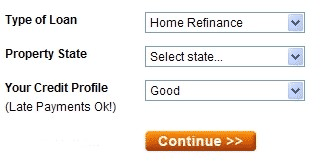Balloon Mortgage – Glossary Term
A balloon mortgage is a mortgage that has a payment calculated over a long period like 30 years. However, the mortgage balance is due and payable before 30 years are up.
For example, a 15 year balloon mortgage would mean the payment is calculated or amortized over 30 years but at the 15 year mark, you owe the remaining balance on your mortgage.
Balloon Mortgage Risks
Having a mortgage with a final “balloon payment” is one method of offering lower interest rates than the going fixed mortgage interest rate…and in that regard it is a little like an adjustable rate mortgage. A mortgage with either a balloon payment or an adjustable interest rate puts lender risk on the back of the borrower in exchange for a better mortgage rate.
The lower rate along with the amortization of 30 years means a lower mortgage payment. An amortization calculator can tell you what your payment will be.
The lender risk that is shared with the borrower in both cases is called “interest rate risk”…the risk a lender takes when he establishes a rate today not knowing if rates tomorrow will be higher and therefore better for him. If mortgage rates rise, the lender’s income suffers because he cannot change your rate on a fixed rate mortgage. He would love to call your fixed rate loan due and re-lend you the money at the new higher current mortgage rates. But he can’t, so he suffers.
An ARM mortgage lets the lender effectively do this as periodically the rate gets adjusted automatically so the lender doesn’t suffer. A balloon payment alleviates lender interest rate risk by having short balloon periods like 5, 7, 10, or 15 years, so the lender will get all his money back soon so he can lend it out again at the new higher rates.
However, as a mortgage consumer you must weigh the benefits of a lower initial interest rate against the costs of future interest rate increases when considering both ARMs and balloon mortgages. In the case of balloon mortgages, the mortgage must be paid in full usually by a sale or refinance. Since you don’t pay much principal (see Amortization Schedule) in the early stages of the mortgage, your mortgage balance after 5 or 7 years won’t be that much lower than when you started. This can cause problems if you need to sell or refinance to satisfy the balloon payment if home values have dropped in the interim.
Homes that are “underwater” or “upside down” at the time the balloon comes due are unable to sell or refinance to pay the ballooning final payment.
Many a home owner fell victim to foreclosure not understanding the risks they take on when opting for a balloon mortgage.
Also, do not confuse a balloon mortgage with an interest only loan. Interest only means you do not pay any principal. Your loan balance is the same as when you started. A balloon payment does pay principal. Then you owe the remaining balance when it is due.
Previous Post:« Service Release Premium – Glossary Term
Next Post:» Notice of Default – Glossary Term
Tags: 15 Year Balloon • ARM • Balloon Mortgage • Interest Only Loan


Leave a Reply